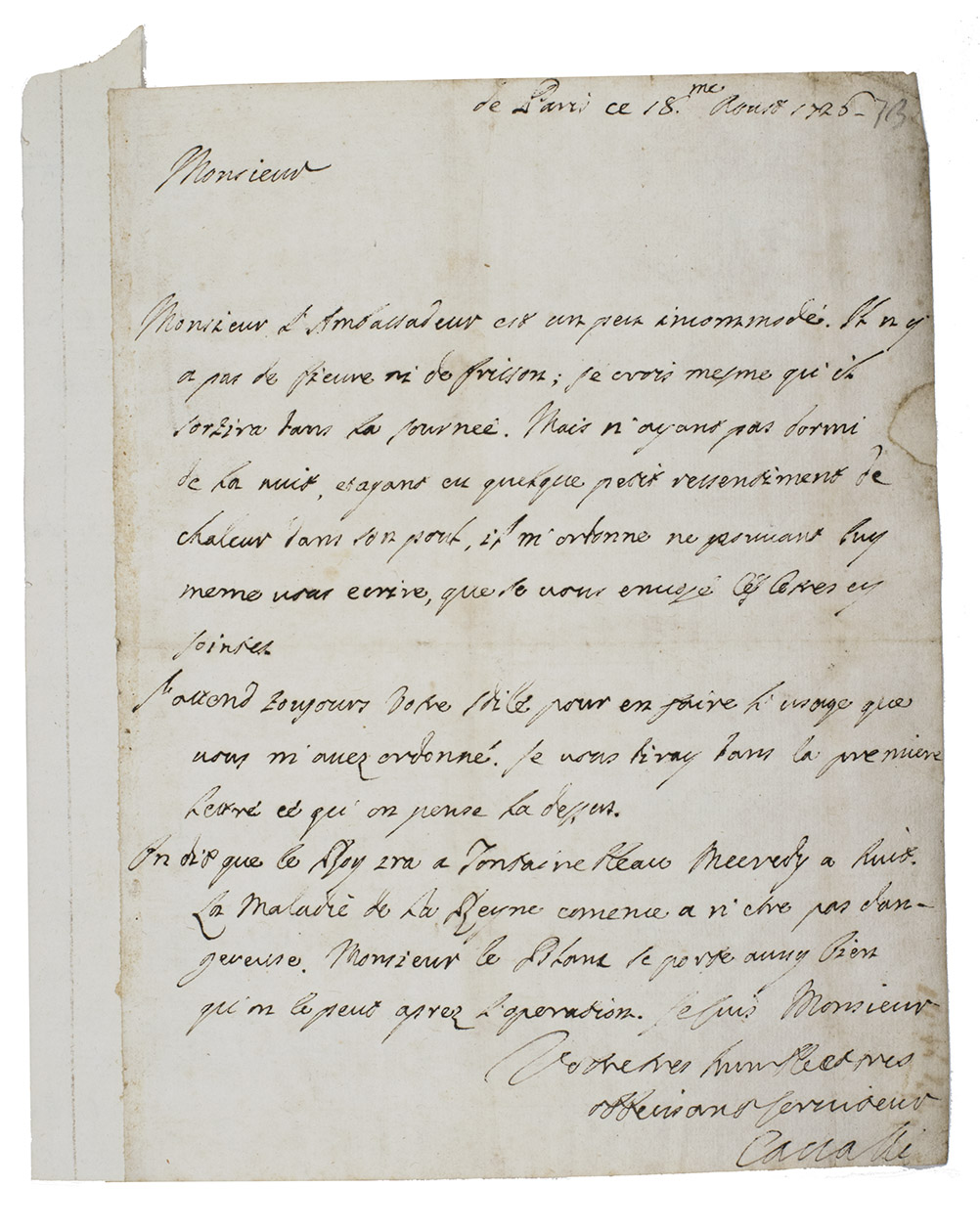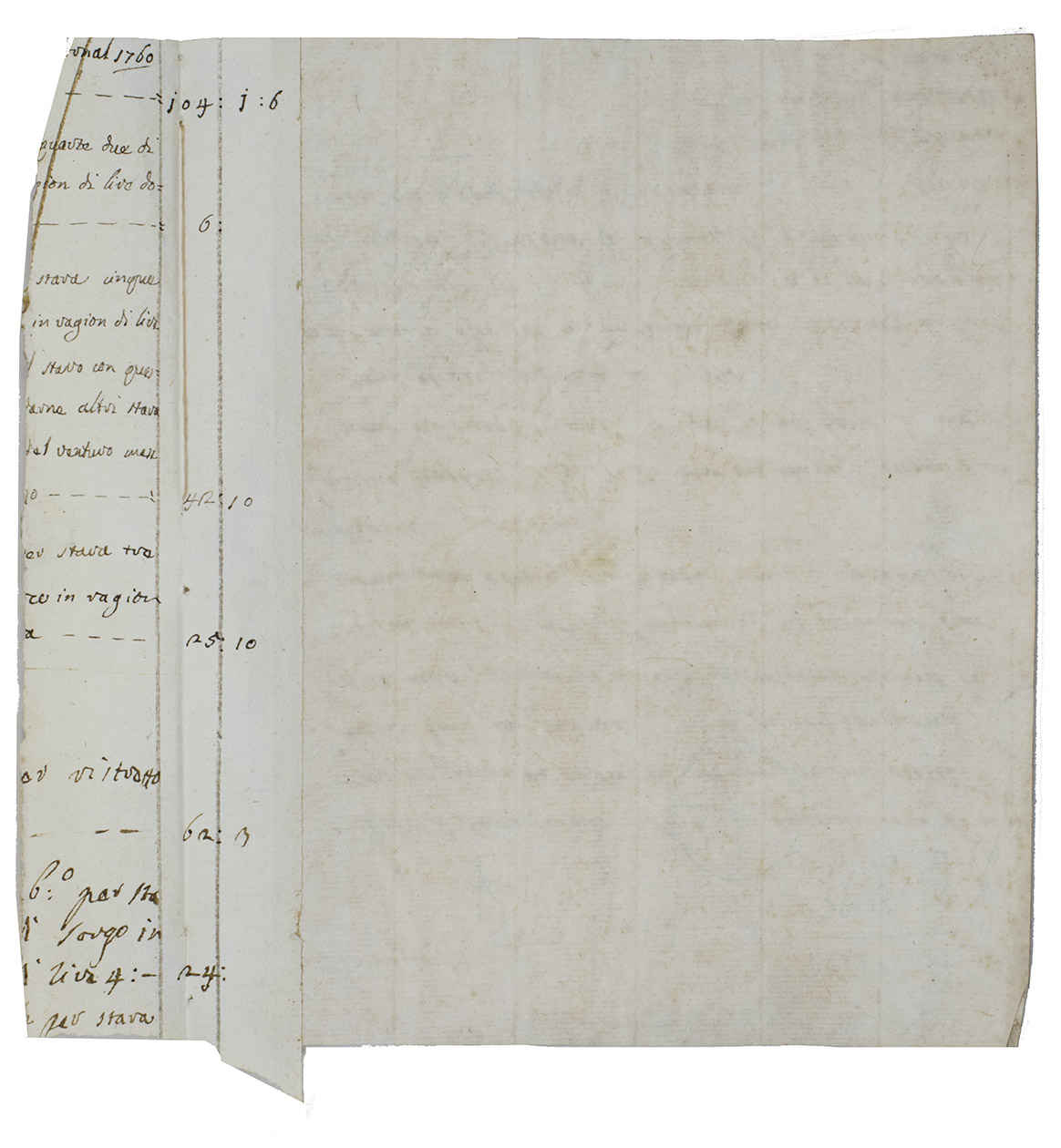[AUTHOGRAPH - LETTER]. CAVALLI.
[Letter to an unknown person].
Paris, 18 August 1726. 4to. [1] leaf.
€ 500
The writer of the letter, a certain Cavalli was apparently a kind of spy in the service of an unidentified ambassador, reporting on the activities of members of the French Royal court. He indicates he is writing at the request of the ambassador, but we have not identified the recipient, perhaps an official or journalist. He first tells the addressee that the "the Ambassador" is not very well: he has no fever nor is he shivery, and he even goes out during the day. But, having not slept during the night and having a somewhat fast pulse, he cannot write himself and has ordered the writer to send the two annexed letters (not now present).
He notes that he will report in the first - following the ambassadors order - what opinions, ideas and rumours are circulating among "la dessus" (in the highest circles).
He mentions further that the King (Louis XV) will go to Fontainebleau the next Wednesday at 8 oclock and that the disease of the Queen (Marie Leszczynska) seems to be not very dangerous.
Monsieur Le Blanc thinks that one can do "the thing"(?!) after the operation: an enigmatic communication.
Much of the letter remains mysterious beyond the identities of Cavalli, the ambassador he served and the recipient of his letter. Charles-Henri, comte d'Hoym appears to have been Polish ambassador in Paris around this time and might have wished to keep an eye on the Queens circumstances, but we find nothing to link him to a Cavalli, whose name sounds Italian. Charles François de la Baume Le Blanc, duc de La Vallière, and his son Louis César were both at the court at this time, but we find nothing more to associate either with the "Monsieur Le Blanc" of the letter nor any clue to what they think might be done concerning Marie Leszczynska after whatever operation she was to undergo. It certainly places the letter in the dark atmosphere of court intrigues and secret operations flourishing in 18th-century Paris.
The letter was formerly bound in a volume containing more letters and documents. This volume had been part of the famous Sir Thomas Phillipps collection.
Small repair in the fore-edge margin.
Related Subjects:



